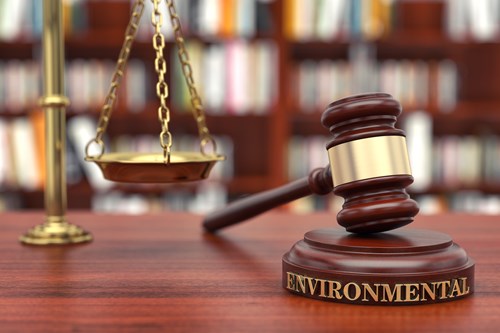Shipping companies and cargo owners must grapple with significant commercial consequences from new environmental regulations that will result in high costs for emissions and a potential transport capacity squeeze due to a lack of suitable green tonnage, a UECC-hosted webinar was told.
All industry minds are focused on these market-changing measures - mainly the IMO’s Carbon Intensity Indicator (CII) being implemented this year and the EU Emissions Trading System (ETS) set to be introduced for shipping from 2024 - that are set to have a far-reaching financial impact.
This was reflected by the high attendance of some 95 participants from major European OEMs at the online forum at which DNV’s Director Environment Maritime Eirik Nyhus and UECC’s Energy & Sustainability Manager Daniel Gent shed more light on the regulatory changes.
Carbon price set to rise
The EU ETS, due to be phased in from 1 January next year subject to final ratification, will initially require shipping companies operating in European waters to buy and surrender EU Allowances (EUAs) for 40% of their greenhouse gas emissions from the use of fossil fuels, rising to 70% in 2025 and 100% in 2026.
The price of these EUAs, or carbon credits, will be determined by supply and demand but the volume of allowances available in the market or at auction will be rapidly reduced by the EU under the cap-and-trade system to incentivise energy efficiencies and a switch to green fuels.
“Prices are set to increase beyond the current level of €80-90 per tonne of CO2 that we see today as industry demand for EUAs is unlikely to shrink at the same rate as allowances due to the slow pace of decarbonization. Fuel equivalent pricing will therefore increase significantly towards 2040,” Nyhus said.
Sharing cost of emissions
Furthermore, while the first deadline for surrendering allowances falls in September 2025, emission costs will kick in immediately from implementation of the ETS on 1 January 2024 as shipping companies will need to purchase EUAs on a rolling basis in line with their emissions to settle contracts with other voyage stakeholders while trading, according to Nyhus.
This will necessitate proper commercial arrangements in the value chain for equitable sharing of emission costs among stakeholders to avoid exposure to carbon price volatility, Gent said, though he added the consumer should ultimately bear these costs under the ‘polluter pays’ principle.
There is some cost respite for shipowners as a further EU tax measure, the Energy Taxation Directive, to remove exemptions for bunkers sold in the EEA that was due to be introduced this year looks to have been shelved for the time being, primarily due to energy price inflation in Europe.
Market impact from slow steaming
On the operational side, the CII rating system of A-E is geared to reducing the carbon intensity of international voyages through measures such as slow steaming.
But Gent highlighted: “If you slow down vessels, but the volume of cargo to be transported remains the same or increases, then this will require more vessels that will increase costs and drive up charter rates due to tighter supply.”
The shortage of tonnage could be exacerbated by taking vessels out of the market to be retrofitted to meet the minimum C rating required under CII or be decommissioned, he added.
"There will be a premium for green tonnage that can operate at high speeds and carry large volumes of cargo but still achieve an A, B or C rating. These will be in high demand because those vessels offer flexibility while still complying with the regulation,” Gent said.
Meeting contractual obligations
Consequently, UECC has invested in five advanced green-powered newbuild PCTCs, as well as fuel optimisation technology and alternative fuels on other vessels, to ensure strong CII ratings for its fleet while also reducing its exposure to the ETS by cutting emissions, he added.
“It is important for transport buyers to understand where their providers stand on meeting future regulations and whether they can meet their contractual obligations over the coming years,” Gent said.
He revealed there has been high interest from UECC clients in the CII rating of its vessels in relation to their own KPIs, and added “this metric now has a direct financial cost”. The company is now inviting clients to participate in ETS workshops to explain the complexities of the new rules.
For more information contact:
Bjorn O. Gran Svenningsen, Director Sales & Marketing, UECC
Email: bsv@uecc.com

New environmental regulations are set to lead to higher costs for the shipping industry Photo: 123RF/zamollxis